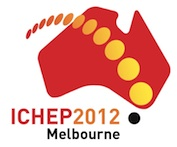Speaker
Prof.
Fernando Barreiro
(Universidad Autonoma De Madrid (ES))
Description
We study the prospects of measuring the CKM matrix element $\vert V_{ts}\vert$ at the LHC with the top quarks produced in the processes $p p \to t\bar{t}X$ and $p p \to t/\bar{t} X$, and the subsequent decays $t \to W^+s$ and $\bar{t} \to W^- \bar{s}$. To reduce the jet activity in top quark decays, we insist on tagging the $W^\pm$ leptonically, $W^\pm \to \ell^\pm \nu_\ell$ ($\ell =e, \mu, \tau$), and analyse the anticipated jet profiles in the signal process $t \to W s$ and the dominant background from the decay $t \to W b$. To that end, we analyse the $V0$ ($K^0$ and $\Lambda$) distributions in the $s$- and $b$-quark jets concentrating on the energy and transverse momentum distributions of these particles. The $V0$s emanating from the $t \to W b$ branch have displaced decay vertexes from the interaction point due to the weak decays $b \to c \to s$ and the $b$-quark jets are rich in charged leptons. Hence, the absence of secondary vertexes and of the energetic charged leptons in the jet provide additional ($b$-jet vs. $s$-jet) discrimination in top quark decays. These distributions are used to train a boosted decision tree (BDT), a technique used successfully in measuring the CKM matrix element $\vert V_{tb}\vert$ in single top production at the Tevatron.
Using the BDT classifier, and a variant of it called BDTD, which makes use of decorrelated variables, we calculate the BDT(D)-response functions corresponding to the signal ($t \to W s$) and background ($t \to W b$). Detailed simulations undertaken by us with the Monte Carlo generator PYTHIA are used to estimate the background rejection versus signal efficiency for three representative LHC energies $\sqrt{s}=7$ TeV, 10 TeV and 14 TeV, of which only the analysis for the $\sqrt{s}=14$ TeV case is shown in detail. We argue that a benchmark with 10\% accuracy for the signal $t \to W s $) at a background ($t \to W b$ ) rejection by a factor $10^3$ (required due to the anticipated value of the ratio $\vert V_{ts}\vert^2/\vert V_{tb} \vert^2 \simeq 1.6 \times 10^{-3}$) can be achieved at the LHC@14 TeV with an integrated luminosity of 10 fb$^{-1}$.
Author
Prof.
Fernando Barreiro
(Universidad Autonoma De Madrid (ES))
Co-authors
Prof.
Ahmed Ali
(DESY, Hamburg, Germany)
Dr
Theodota Lagouri
(UAM, Madrid, Spain)
